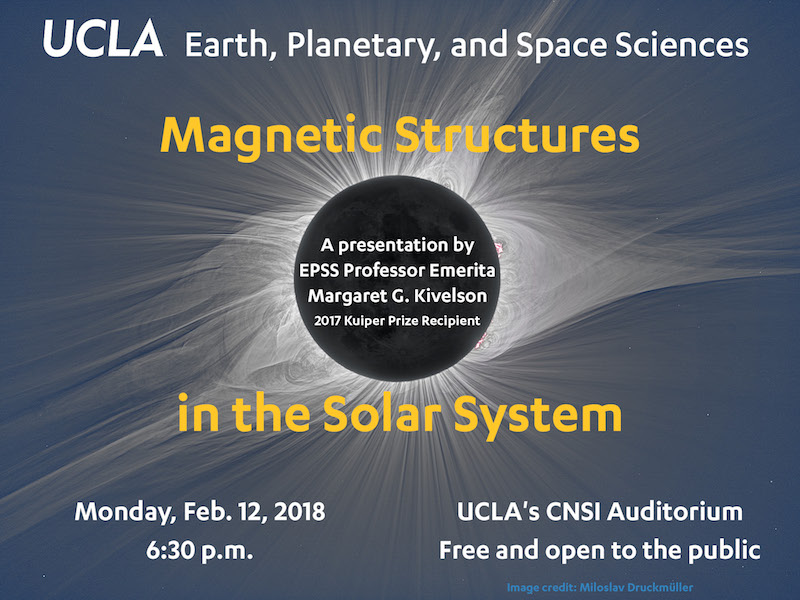
Join us for an engaging presentation and Q&A with UCLA EPSS Professor Emerita Margaret G. Kivelson, recipient of the 2017 Kuiper Prize of the American Astronomical Society for outstanding contributions to planetary science.
Professor Kivelson will share her expertise about magnetic fields in the Solar System. On August 21, 2017, millions of Americans observed a total eclipse of the sun, most of them seeing for the first time the solar corona, the complex filmy structure that surrounds the visible disk. In regions within a few solar radii above the sun’s surface the structure of the corona is imposed by the sun’s magnetic field. The magnetic field traps a tenuous, highly ionized gas, the plasma that forms the corona. The charged particles of the plasma, confined to move along lines of magnetic force, scatter sunlight and make visible the configuration of the magnetic field. Elsewhere in the solar system, plasma is confined in large-scale magnetized structures that are never visible but, over decades, have been yielding their secrets to an international armada of scientific spacecraft. Structured plasma and fields expand outward from the sun, forming the solar wind, which flows at supersonic speeds to distances far beyond the orbit of Pluto where it encounters a magnetic boundary called the heliopause. Most planets (and the moon, Ganymede) are embedded in magnetic structures referred to as magnetospheres whose dynamics account for a range of phenomena that includes both the beautiful (for example, the aurora) and the undesirable (spacecraft failures and intermittent large scale power outages). This talk will describe aspects of the vastly different magnetic structures of the solar system and compare them, noting how they vary with the size, rotation rate, and location in the solar system of the central body.
